QuestionHi Chris,
I have a friend who just received a beautiful blue beta fish (her kids immediately named him "Smurf") in one of those vases with the lily and the roots. First, is that a really safe and healthy environment for Smurf? And is he happy? Second, the roots have really taken over the vase, he doesn't seem to have that much room to swim about. Should she trim the roots or something? Third, it says all he needs to survive is the roots, don't feed him, is that right? And finally, she's thinking of putting him in a bigger bowl and maybe adding a friend or two. I know betas are very solitary, but are there any other fish that could live in harmony with him--without getting eaten? We don't want to be overprotective of the little guy, but we do want to make sure he lives happily ever after! Help?
Cheers,
Jan
AnswerHi Jan;
What a good betta friend you are! Bettas are much happier and healthier in a regular tank with a thermostatically controlled heater. The roots may prevent him from getting to the top to get air. I would say trim them, but the best option is to get him a more suitable little home.
It is a myth that bettas eat the roots of plants. Bettas are carnivores that need protein. In their natural environment they eat live bugs. When you see him picking at the roots he is eating the tiny micro-organisms growing on them that only he can see. He will eventually starve to death if not fed a balanced diet betta food.
In order to have room for friends, he needs a tank of 5 gallons or more. The general rule of thumb for tank population of small community fish is one inch of adult fish per gallon. The betta counts as 2 inches all by himself. Once the tank breaks in after 6 weeks or so (more about that later) they could add 2 or 3 zebra danios, or a couple of platies. Other possible options are t-bone rasboras, neon tetras, cory cats. These all grow to be an inch or so.
Here is a list of web pages with more info about betta care and keeping;
http://www.healthybetta.com/
http://www.bettatalk.com/
http://freshaquarium.about.com/cs/anabantids2/p/betta.htm
http://freshaquarium.about.com/cs/bettacar1/l/blqa2061.htm
When setting up a new tank you have to go slow and have only a starter fish to get it going for the first 6 or 8 weeks. Here is my article about it;
**********
New Tank Syndrome or Break-in Period
So you have a new tank and you filled it up, put the filter together, mounted the heater into place and turned on the
lights. You have all the plants and decorations where you want them.... You are ready for fish.
But, your filter is not ready for a full tank of fish yet.
The filter is running and moving the water and cleaning out crud, right? Of course! But a very important part of your filter is the part you can't see. An aquarium filter removes the larger visible stuff, but it also must remove
the dissolved fish waste that turns into ammonia in the water. To do this, special bacteria must grow in the filter system and on the particles of gravel in the bottom of your tank. This process occurs even on a limited scale in little fish bowls that have no filter in them.
This is "New-Tank Syndrome" or the "Break-in Period". The entire process takes 6 to 8 weeks to complete because these
"nitrifying" bacteria grow quite slowly.
Start off with only one or two hardy fish (no more than 2 total inches of fish) for every ten gallons of water and don't add more until the 6 to 8 weeks has gone by. Hard to be patient, but it is worth it to keep your fish alive and healthy. As a matter of fact, the bacteria cannot develop
without fish in the tank. You can let that tank sit forever without fish in it, but as soon as the first fish goes in the process begins. Avoid changing the filter pads during break-in. This removes the bacterial colonies that are essential to a balanced aquarium. You can rinse the filter pad out in a container of aquarium water. This will preserve most of the bacteria colonies while still allowing
your filter to flow freely. Even using bacteria additives and water conditioners when you first set up the tank will not make a tank begin the cycle by itself. If there are no
fish to provide food (fish waste) for the bacteria, the beneficial bacteria cultures will die and you will have to
start the colonies all over again once fish are added to the tank. Once the tank has completed the initial cycle, you can change the filter pads every 4 weeks or so. But
for now, just rinse them.
Feed your new fish VERY lightly. Any excess food will cause additional waste your system cannot afford to have right
now. If you see food floating around or lying on the plants and gravel after five minutes, too much food is going into the tank. Cut back a little each time you feed until it is ALL gone 5 minutes after you feed them. Feed them once a day.
During this "break-in period" your tank will become cloudy and milky looking. You may have to tolerate this for the
entire break-in period but it is only temporary. Changing 25% of the water three times a week until the break-in period is over helps a great deal. Changing water reduces the ammonia and nitrites that rise while the bacteria
continues to multiply. If ammonia and/or nitrites become too high, your fish will become stressed and possibly die. Use a good water conditioner when you replace the water
and make sure it is the right temperature to avoid shocking your fish.
When the break-in is over after 6 to 8 weeks and there are no nitrites or ammonia present in the water you can slowly add more fish. Add one or two every week until you reach the desired population. This allows the bacteria to adjust to the new population every time before adding more. Monitor the nitrites and ammonia to be sure they don't come up. If they do, make a 25% water change and check them again. Don't add the next fish until the levels are down again.
The safe maximum population for any size tank is one inch of adult fish for every gallon of water in the tank. Do some research to be sure of the fish you are interested in. Even though they are small when you buy them, you have to base your population calculations on full-sized adult fish.
Many hobbyists have up to two inches per gallon but this can be risky. If a water quality issue arises or a disease occurs it will spread fast and furious in an over-populated tank. In any case, 25% water changes every week to two weeks are absolutely essential for the health of your fish.
Following these guidelines will help you get your new tank on the right track.
**********
Followups Welcome
At Your Service;
Chris Robbins
Come on over and join us on the freshwater fish forum at About.com to get even more information too;
http://freshaquarium.about.com/od/questionsanswers/a/naavigateforum.htm
My member name is ChrisR62. See You There!

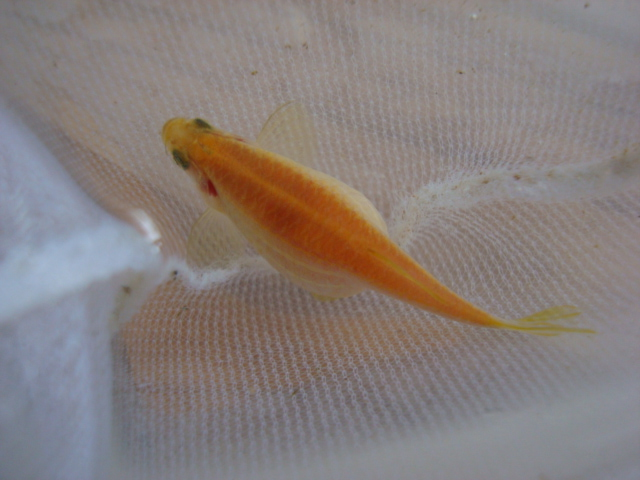 fat danio
Questionfat fish
fat fish
QUESTION: hi
i
fat danio
Questionfat fish
fat fish
QUESTION: hi
i
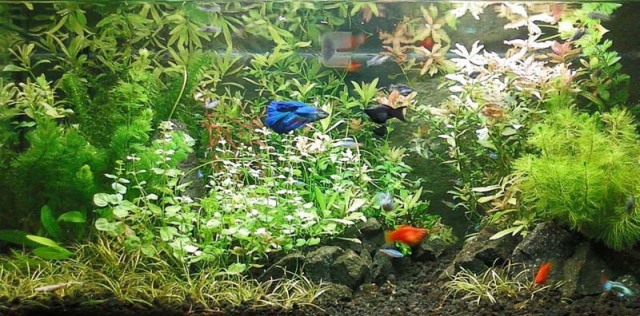 does my betta happy or not?
Question
my current tank
hi jaymie, here is anot
does my betta happy or not?
Question
my current tank
hi jaymie, here is anot
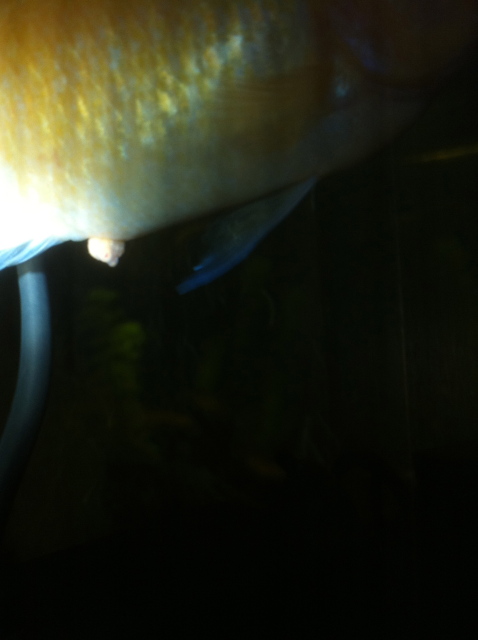 African Cichlid with swollen anus
Question
Red Zebra
I have what I believe is a Maylandia
African Cichlid with swollen anus
Question
Red Zebra
I have what I believe is a Maylandia
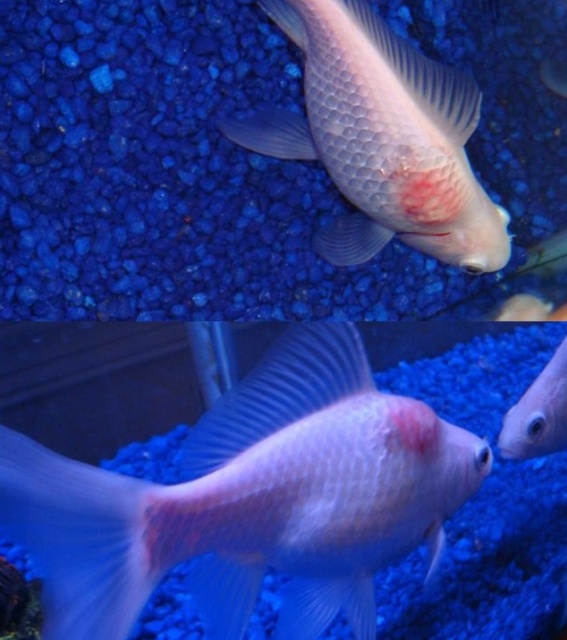 Goldfish with swollen bump near dorsan fin
Question
Goldfish with swollen
Jumbo (see attached pho
Goldfish with swollen bump near dorsan fin
Question
Goldfish with swollen
Jumbo (see attached pho
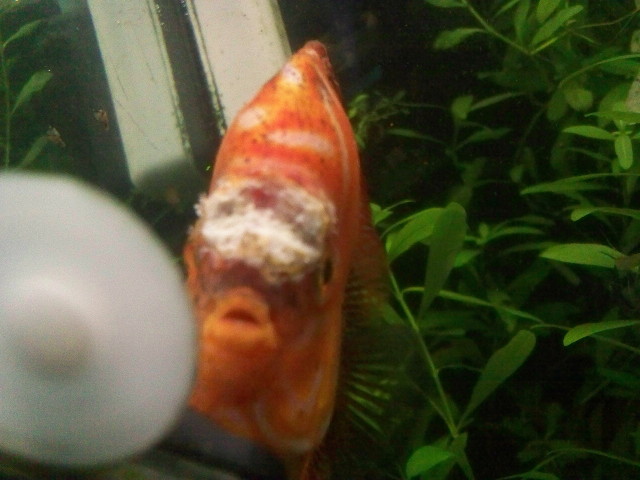 Discus Open Wound
QuestionDiscus Sore
QUESTION: Hello,
My 2 year o
Discus Open Wound
QuestionDiscus Sore
QUESTION: Hello,
My 2 year o